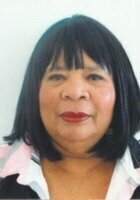All Human Anatomy and Physiology Resources
Example Questions
Example Question #81 : Gross Anatomy
Which muscle retracts the angle of the mouth when you laugh?
Risorius
Procerus
Zygomaticus minor
Orbicularis oris
Risorius
We are looking for a muscle around the mouth, leaving us with the risorius, orbicularis oculi, and zygomaticus minor muscles. The orbicularis oculi protrudes the lips and the zygomaticus minor elevates the upper lip. This means that the correct answer is the risorius muscle.
Example Question #82 : Human Anatomy And Physiology
Which muscle draws the eyebrows down?
Masseter
Orbicularis oculi
Procerus
Risorius
Procerus
Of the answer choices, the risorius and master muscles control movements around the mouth and jaw. The orbicularis oculi is responsible for movement of the eyelid. This means that the correct answer is the procerus muscle.
Example Question #83 : Human Anatomy And Physiology
What does the temporalis do?
Closes the jaw
Raises the arm
Pulls the arm towards the body
Closes the eye
Closes the jaw
The temporalis muscle closes the jaw, the deltoid is responsible for raising the arm, the orbicularis oculi closes the eye, the pectoralis major pulls the arm towards the body.
Example Question #31 : Muscles
What is the innervation for the obliquus capitis inferior muscle?
Cranial nerve V
Cranial nerve X
Trigeminal nerve
Suboccipital nerve
Suboccipital nerve
The obliquus capitis inferior muscle is innervated by the suboccipital nerve. Cranial nerve X, is also known as the vagus nerve and innervates many other muscles, including the heart, but not the obliquus capitis inferior. The trigeminal nerve is also known as cranial nerve V, is responsible for the sensations in the face.
Example Question #32 : Muscles
What is the primary muscle of inspiration?
Scalenes
Sternocleidomastoid
Pectoralis major and minor
Diaphragm
External and internal obliques and transverse abdominal muscles
Diaphragm
The primary muscle of inspiration is the diaphragm. As the diaphragm contracts it flattens creating a negative pressure system that subsequently pulls air into the lungs from outside the body. The other muscles are involved during inspiration but it is only when the body is demanding more energy and thus requires these additional muscles to contract. The sternocleidomastoid, scalene, and pectoralis muscles help by pulling upwards on the chest wall, whereas the abdominal muscles pull down further increasing negative pressure.
Example Question #33 : Muscles
Which of these are false regarding the rectus abdominis?
The rectus abdominis is superficial in the anteromedial abdomen.
The rectus abdominis is encased in the rectus sheath, or abdominal aponeurosis.
The rectus abdominis receives the majority of its arterial supply from the posterior intercostal and subcostal arteries.
Three fibrous bands known as tendinous inscriptions transect the rectus abdominis muscles and divide each of them into four sections.
The rectus abdominis can contract in concert with the external abdominal obliques, internal abdominal obliques, and the transverse abdominis to compress the abdominal contents, helping with expiration and expulsion of abdominal contents.
The rectus abdominis receives the majority of its arterial supply from the posterior intercostal and subcostal arteries.
The rectus abdominis receives the majority of its arterial supply from the superior and inferior epigastric arteries.
Example Question #34 : Muscles
Which of the following statements about the auricular group of muscles is false?
The auricularis group is supplied by the superficial temporal and posterior auricular arteries.
The auricularis superior elevates the ear.
The auricularis anterior attaches from the galea aponeurotica to the anterior ear.
The auricularis posterior attaches from the temporal bone to the posterior ear.
There are four auricularis muscles: the auricular anterior, the auricular superior, the auricular inferior, and the auricular posterior.
There are four auricularis muscles: the auricular anterior, the auricular superior, the auricular inferior, and the auricular posterior.
There are three auricularis muscles: the auricular anterior, the auricular superior, and the auricular posterior.
Example Question #35 : Muscles
Which of the following is not a function of the rectus abdominis?
compression of the abdominopelvic cavity
depression of the rib cage
flexion of the trunk at the spinal joints
Ipsilateral rotation of the trunk at the spinal joints
lateral flexion of the trunk at the spinal joints
Ipsilateral rotation of the trunk at the spinal joints
Ipsilateral rotation of the trunk at the spinal joints is an action of the internal abdominal obliques, not the rectus abdominis.
Example Question #37 : Identifying Muscles Of The Trunk, Core, And Head
Which of the following statements about the anterior triangle of the human neck is correct?
The superior border of the anterior triangle of the neck is the posterior belly of the digastric muscle.
None of the other statements are correct.
The lateral border of the anterior triangle of the neck is the midline of the body (in the sagittal plane).
The inferior border of the anterior triangle of the neck is the inferior border of the mandible.
The lateral border of the anterior triangle of the neck is the medial border of the sternocleidomastoid (SCM) muscle.
The lateral border of the anterior triangle of the neck is the medial border of the sternocleidomastoid (SCM) muscle.
The anatomical boundaries of the anterior triangle of the neck are:
Superior: Inferior border of the mandible
Medial: Midline of the body (in the sagittal plane)
Lateral: Medial border of the sternoclediomastoid (SCM) muscle
Thus, the only correct statement in the answer choices provided is that the lateral border of the anterior triangle of the neck is the medial border of the sternocleidomastoid (SCM) muscle.
The choice, "The superior border of the anterior triangle of the neck is the posterior belly of the digastric muscle," is incorrect because it describes the superior border of the carotid triangle, not the anterior triangle of the neck.
Example Question #38 : Identifying Muscles Of The Trunk, Core, And Head
Which of the following statements about the posterior triangle of the neck is true?
The posterior boundary of the posterior triangle of the neck is the anterior border of the trapezius muscle.
None of the other statements are correct.
The posterior boundary of the posterior triangle of the neck is the posterior border of the sternocleidomastoid (SCM) muscle.
The anterior boundary of the posterior triangle of the neck is the pinna of the ear.
The superior boundary of the posterior triangle of the neck is the middle third of the clavicle bone.
The posterior boundary of the posterior triangle of the neck is the anterior border of the trapezius muscle.
The only true statement provided about the boundaries of the posterior triangle of the neck is "The posterior boundary of the posterior triangle of the neck is the anterior border of the trapezius muscle."
The boundaries of the posterior triangle of the neck are as follows:
Anterior: Posterior border of the sternocleidomastoid (SCM) muscle
Posterior: Anterior border of the trapezius muscle
Inferior: Middle one third of the clavicle bone
The incorrect statements are variations upon the correct anatomy of the posterior triangle of the neck. The pinna of the ear, while superior to the posterior triangle of the neck, is neither a superior boundary nor an anterior boundary of the posterior triangle.
All Human Anatomy and Physiology Resources




